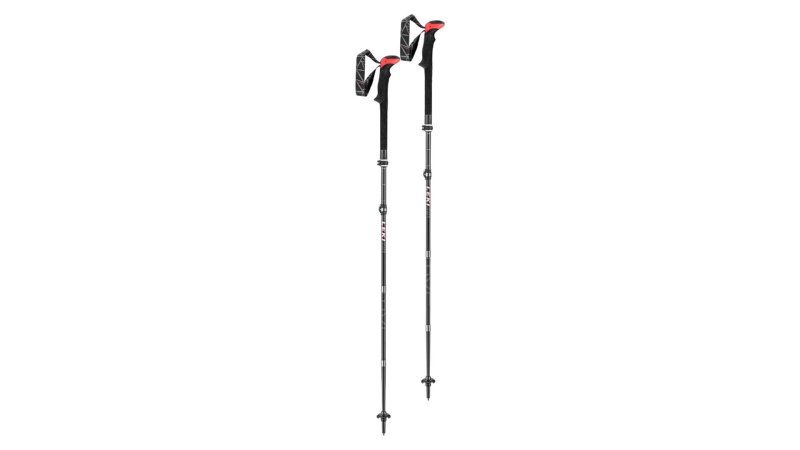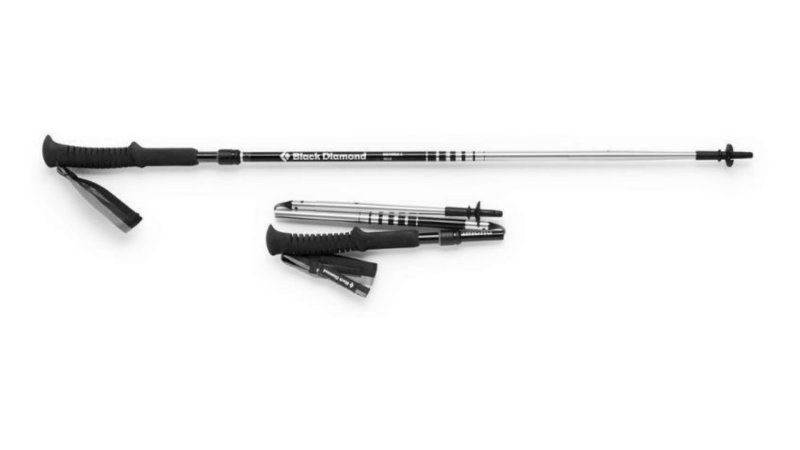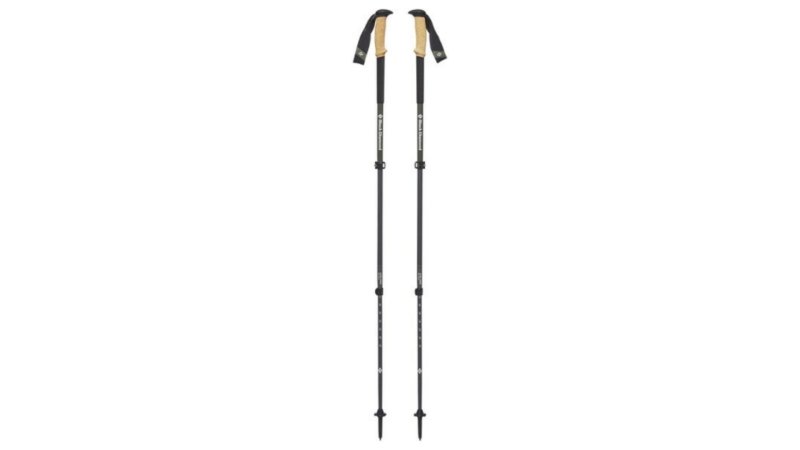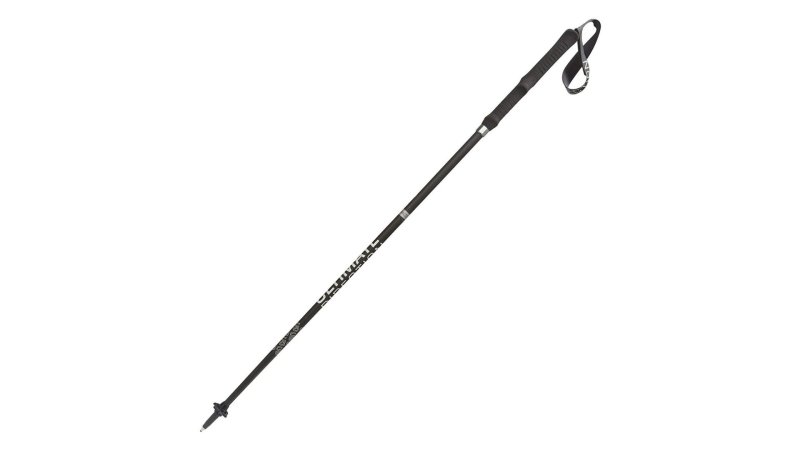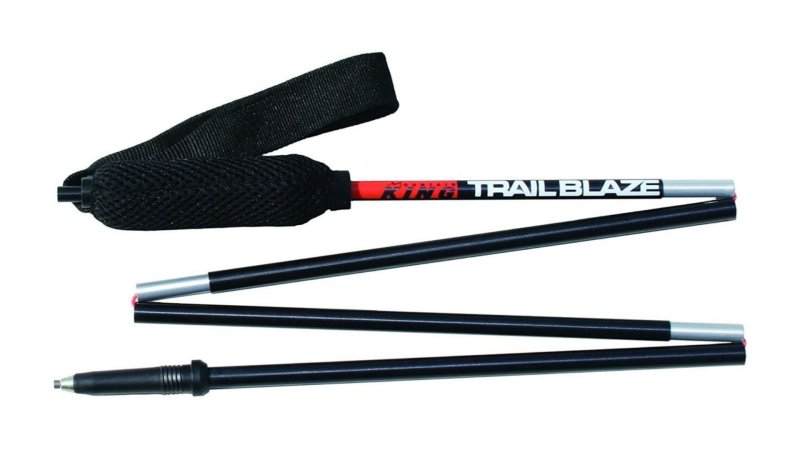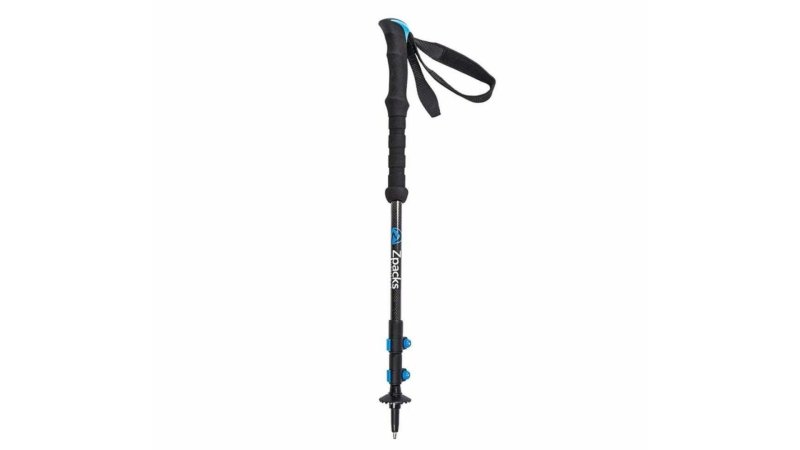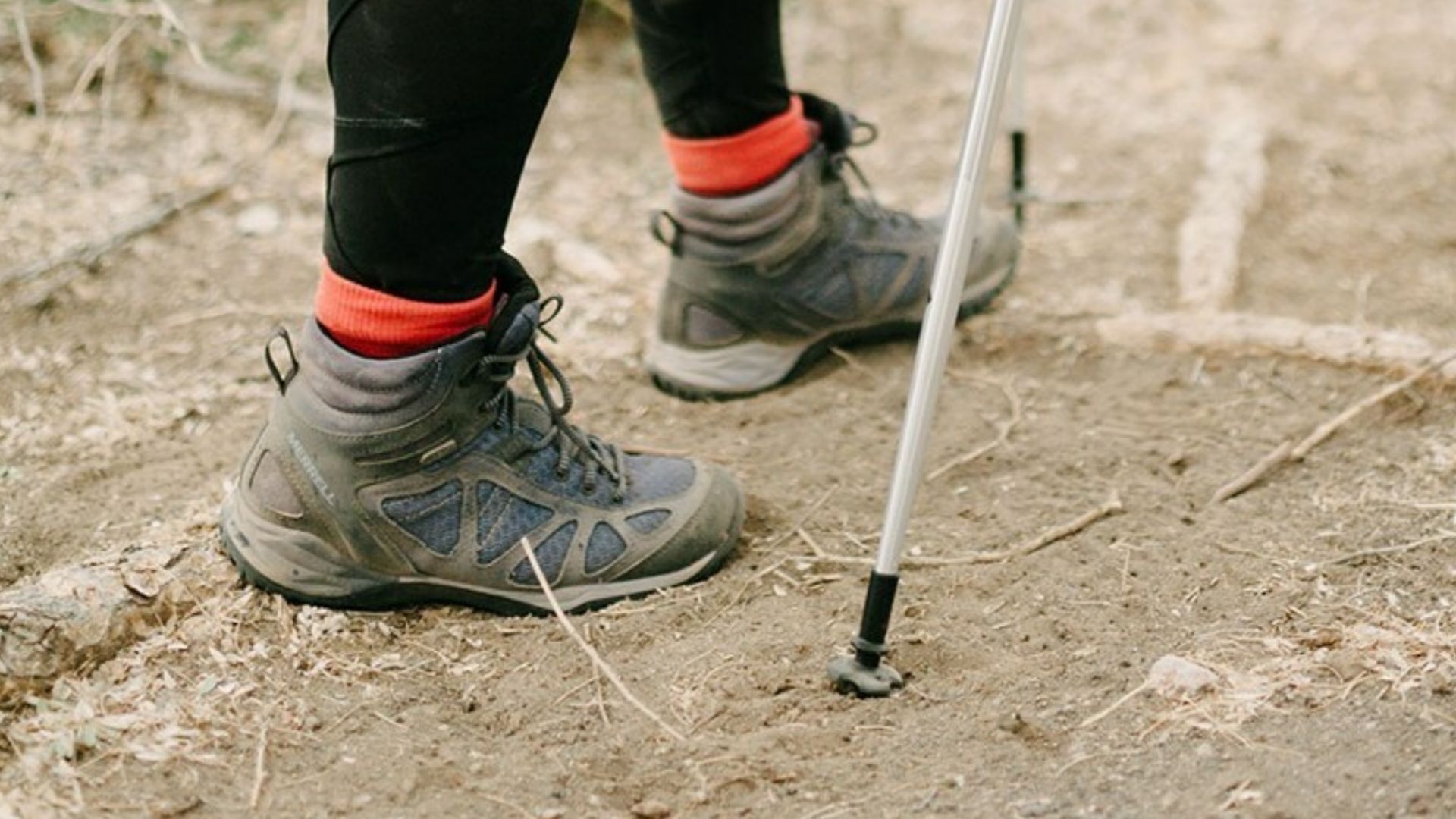

We may earn revenue from the products available on this page and participate in affiliate programs.
Hiking poles have been a standard part of my packing list for a few years now. I used them — well, one — for the first time during a 2015 climbing trip in Grand Teton. After reaching the top, we had to make the 7,000-foot descent back to the trailhead through rocky terrain. Standing 6-foot-3, I felt like a giraffe walking on stilts as my guide cruised down the talus slope using trekking poles.
He noticed how slow I moved and offered to let me try one of his poles for a few miles. I immediately noticed a difference. With a third-point of contact, I felt more stable and confident moving downward over the loose, rocky terrain. As soon as I got home, I ordered a pair and started using them every time I went out.
Over the past six years of use, hiking poles have allowed me to move over rugged terrain quickly and confidently while carrying a heavy pack. They’ve also saved me from having a number of bad falls and kept me (relatively) injury-free. I highly recommend them. With that said, here are my picks for the best hiking poles.
Best Overall
Leki Micro Vario Carbon Trekking Pole
Pros
- Strong, light, and durable
- Super comfortable grips
- Adjustable and versatile
Cons
- More limited in length than other brands
- Expensive
Product Specs
- Weight: 480 grams (1.05 lbs) (pair)
- Usable length: 110 to 130 cm (43 to 51 inches)
- Collapsed length: 40 cm (15.7 inches)
- Grip material: Aergon Thermo foam
- Shaft material: Carbon fiber
Best Value
Black Diamond Distance Z Trekking Poles
Pros
- Lightweight
- Relatively rugged (not intended for heavy pack use)
- Very stowable
Cons
- Not adjustable
- Thin wrist straps aren’t the most comfortable
- Wrist straps wear out after a few hundred miles
Product Specs
- Weight: 342 to 401 grams (12.1 to 14.2 ounces) depending on size
- Usable length: Seven sizes from 100 to 130 cm
- Collapsed length: 33 to 43 cm (13 to 178 inches) depending on size
- Grip material: Lightweight EVA foam
- Shaft material: 7075 aluminum
Editor’s Choice
Black Diamond Alpine Carbon Cork
Pros
- Lightweight
- Rugged, durable
- Ergonomic, comfortable
- Adjustable length, and customizable baskets and tips
Cons
- Not adjustable
Product Specs
- Weight: 486 grams (1 lb 1.1 oz) (120 cm pair)
- Usable length: 100 to 130 cm (39 to 51 inches)
- Collapsed length: 61 cm (24 inches)
- Grip material: Cork
- Shaft material: Carbon fiber
Best Ultralight Trekking Poles
Ultimate Direction FK Ultra poles
Pros
- Super lightweight
- Strong carbon fiber tapered design
- Built-in tensioner
Cons
- Expensive
- Internal tension cord lacks protective plastic
- Clunky locking mechanism
Product Specs
- Weight: 330 grams (11.64 oz) per 120 cm pair
- Usable length: Seven sizes from 105 to 135 cm (41.3 to 53.1 inches)
- Collapsed length: 42 cm (16.5 inches)
- Grip material: EVA foam
- Shaft material: carbon fiber
Lightest Trekking Poles
Mountain King Trail Blaze Carbon Ultra Poles
Pros
- Super lightweight
- Functional
- Affordable
- Very stowable
Cons
- Somewhat brasive grips
- Unprotected tensioning cord
- Flexy shafts
Product Specs
- Weight: 220 grams (7.7 oz) (per 120 cm pair)
- Usable length: Five sizes from 110 to 142 cm (43 to 55 inches)
- Collapsed length: 30 cm (11.8 inches)
- Grip material: Foam
- Shaft material: Carbon fiber
Honorable Mention Lightweight Trekking Poles
Zpacks Carbon Fiber Trekking Poles
Pros
- Lightweight
- Comfortable cork grips
- Can buy individually
- Budget-friendly
Cons
- Not the most stowable/collapsable
- Locks are plastic not aluminum
Product Specs
- Weight: 410 grams (14.4 oz) (per foam handled pair)
- 434 grams (15.4 oz) (per cork handled pair)
- Usable length: 100 to 137 cm (39 to 54 inches)
- Collapsed length: 62 cm (24.5 inches)
- Grip material: Foam or cork
- Shaft material: Carbon fiber
Why you should trust us
I’ve been an outdoorsman for more than 35 years. I’m an avid long-distance backpacker, rock climber, and mountaineer who understands the value well-designed gear delivers, especially when your life depends on it. I don’t get paid by the manufacturers and have editorial independence. My editor leaves it to me to recommend and prints what I write. All of this enables me to provide you, our valued readers, with our unvarnished, honest opinions on the recommendations we make.
Types of hiking poles
Trekking poles come in several styles, adjustable length and fixed length, and come with an array of features.
Adjustable
These poles are generally telescoping in design and allow the user to shorten the poles when climbing uphill and lengthen them on downhills for additional stability and efficiency in rugged terrain. They generally allow the user to adjust them from 60 cm (24 inches) in a completely collapsed and stowable position, to 140 cm (55 inches) in a fully extended position. They tend to be somewhat heavier and more sturdy than fixed-length poles.
Fixed
Fixed-length poles are just that: They come in one size and don’t adjust, so be sure to buy the right size for you. They can either be a solid pole or one that typically collapses into three or four foldable segments, commonly referred to as Z poles. They tend to pack smaller, are more lightweight, but are less durable and strong than adjustable poles.
Ultralight
Ultralight poles can be adjustable but are more commonly fixed and designed to minimize swing weight when running. This makes them lighter, less strong, and faster to move with the flick of a wrist. When running dozens of miles, every ounce counts, and less weight in the hand means less fatigue over the hours. These poles typically weigh less than a pound per pair.
Key features of hiking poles
Grips
Most trekking poles come with either cork, foam, or some sort of rubber grips. I tend to prefer cork grips since I do most of my long-distance hiking on the East Coast with its rain and humidity. Cork stays grippy when wet and doesn’t get slimy. It also insulates a bit, cushions a bit of shock, and molds to your hand over time. Foam tends to be the softest in hand, but also absorbs moisture. Rubber also helps insulate from cold and shock, but can get slimy in warmer, more humid climates.
Wrist loops
Wrist loops provide additional stability and support, especially when pushing off on inclines. They also keep the poles attached to your body while enabling your hands to do other tasks. Look for wrist loops that are adjustable and replaceable, and padded for comfort. Most come in left and right-hand variants.
Shafts
Trekking pole shafts are typically made out of two materials: either aluminum or carbon fiber. Aluminum shafts are less expensive, more durable, and the weight varies based on the thickness of the shaft material. They can typically withstand a good deal of stress and will bend but not likely break. Carbon fiber shafts are lighter and tend to dampen more shock than aluminum. They are also more expensive. Under high stress, they are also more likely to break.
Baskets and tips
Baskets are small disk-shaped pieces of plastic that are situated a few inches from the tip of the poles. They help prevent the poles from sinking into soft dirt or snow by increasing the surface area of impact. The pole tips are generally made from tungsten carbide or steel to provide additional traction on rock and ice, or rubber for use on roads.
Benefits of hiking poles
Stability and balance
The most important benefit of trekking poles is that they help keep you upright and help prevent you from busting your ass on rugged terrain far from home. This advantage is more than creature comfort. They help prevent injuries when you are far from medical assistance. They also help make your hikes more enjoyable and help you move more quickly through loose, wobbly, or flooded terrain.
Forward momentum
Trekking poles also help you move faster and more efficiently through rugged terrain, especially while ascending or descending hills.
Shock absorption
When descending, your body — especially your knees — takes a lot of shock, especially while carrying a heavy pack. Trekking poles help dampen some of that shock through the shaft and also transfer some of it to your upper body via your arms. This helps reduce fatigue.
Pricing considerations for hiking poles
Budget
I believe that if you don’t buy nice, you’ll end up buying twice — but I also know budget is a consideration for many of us. I consider anything under $75 to be inexpensive. The lower you go in price, the more you need to check the quality of the poles and their hardware. Cheap also tends to mean heavier.
Mid-range
There are plenty of affordable quality trekking pole options in the $75 to $125 range. You’ll find most poles in this range to have the most essential features and provide solid performance and value.
Premium
I consider anything in the $125 to $225 range to be expensive poles. When you pay this much, you’re typically paying for advanced materials that enable lightweight or ultra-lightweight design. These poles will typically have more comfortable grips and fold or telescope in for the most packable, smallest packages.
How we chose our top picks
All the trekking poles in this review were selected based on hands-on inspection, interviewing other experts, and thoroughly reviewing manufacturers’ specifications. We take our time to get to know the strengths and weaknesses of each item, and also check out the reviews of other experts just to make sure we’re not missing anything.
FAQs on hiking poles
You’ve got questions, Task & Purpose has answers.
Q. How do I use hiking poles?
A. First, you need to decide whether you want one or two poles. Most people choose two. Next, you need to make sure you get the right length. Look for poles that allow your elbow to bend at 90 degrees when the pole tips are on the ground. There’s also a technique for using the poles. Alternate hands and legs while moving and keep the tips behind the handles to help push you forward.
Q. Are hiking poles worth it?
A. Hell, yes. I used to pooh pooh them, but once I tried them, I was sold and have used them for six years now. I won’t go hiking without them because I feel much more stable and efficient when moving over rough terrain, especially when carrying a heavy pack.
Q. Why use hiking poles?
A. Safety and efficiency. The further you go from the trailhead, the more self-reliant you need to be. Trekking poles help keep you upright and assist in preventing you from crashing and injuring yourself. Mine have saved me from twisted ankles, broken bones, and expensive dental repair work. Also, they add your arms into the propulsion system and help you move faster and more confidently over rough terrain.
Q. Can you take hiking poles on a plane?
A. Yep. If you are going to travel, consider using Z style poles that fold up into packages about 15 inches in length or smaller.
Our gear section
Joe Plenzler is a Marine Corps veteran who served from 1995 to 2015. He is a backcountry expert, long-distance backpacker, rock climber, kayaker, cyclist, wannabe mountaineer, and the world’s OK-est guitar player. He is currently section-hiking the Appalachian Trail with his partner, Kate Germano. He supports his outdoor addiction by working as a human communication consultant, teaching at the College of Southern Maryland, and helping start-up companies with their public relations and marketing efforts
